
Michel Dallaire has designed over 130 urban accessories, both large (subway cars for Boston’s Red Line) and small (Lavo bleach bottles). Among them is U.S. Patent No. 594787, Dallaire’s indestructible, three-speed, two-wheeled machine that powers New York’s bike-share program. The two-wheeler and its portable solar docking system debuted in Montreal in 2009, and like the other everyday inventions from Dallaire’s four-decade-spanning career, they feature his signature pragmatism.
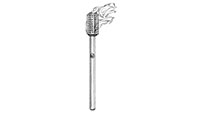
Olympic torch (1976)
Dallaire, born in occupied France in 1942, moved to Quebec as a child. His first major international design, the iconic torch, was carried by Canadian athletes between Ottawa and Montreal on one of the shortest relays in Olympic history (and also the first to transmit the flame via satellite). “The design looks like a burning branch of a tree, just a stick with a furnace,” he says. “I didn’t want it to be something that was precious: It is a tool to carry the flame.”
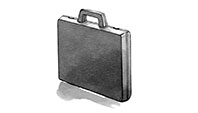
Plasticase (1985)
The Museum of Modern Art was among the first clients to order these simple plastic attachés for its store in 1986. In one decade, Dallaire says, he sold over 10 million briefcases. “It’s a nice relation between cost and value. You buy these for $14—the price of a medium pizza. I have friends that have them for ten years, and they still work.” More durable versions, sold under the name Nanuk, carry firearms, scuba gear, and videography equipment.
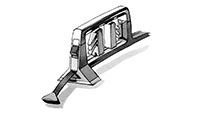
SportRack II (1990)
Sold by Bic (the pen-maker) and later by Thule, Dallaire’s roof rack accommodates canoes, bicycles, and skis. The rack’s key feature is its ease of installation, thanks to an extendable rubber belt that attaches to a car’s roof gutters. “You need three seconds to install the rack,” he says, “and no tools.”
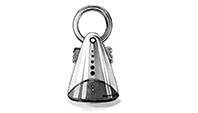
Angelcare baby monitor (1997)
Dallaire initially de-clined an offer to make a monitor alerting parents when their babies stopped breathing, worried that its grave associations would instill fear and uncertainty. He reconsidered, cloaking the technical components inside a white, angel-shaped casing. “The only way I could take away the fear was to dream of this angel,” he says. Models now include infrared cameras, and his vigilant angels, beacons of caution, have taken “flight” in 31 countries.
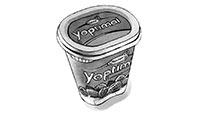
Yoplait yogurt container (2010)
These oval-shaped, polypropylene containers, he says, are meant to be caressed: “You have a nice feeling in your hand—a tactile pleasure that relates to the container.” Dallaire’s design updated a previous model that had proven to be a hazard to wildlife—skunks were getting their heads caught inside.

Docking system and bicycle (2008)
For Montreal’s Bixi bike, Dallaire created a triangular docking clamp and the accompanying solar-powered station. “I see this bike system as street furniture,” says Dallaire. “It’s a useful, practical object that people from the city enjoy. We are not using the infrastructure of the city, so you can deposit the station in a few hours, and if you want to change it the next day, we just remove the station.”
The bike itself was given a heavy aluminum boomerang backbone for maximum stability and durability, he says: “It’s very rugged, a very sturdy frame. In Montreal, this is our fifth season, and the bike is still behaving very well.” Anyone who thinks its handlebars resemble a quintessential feature of Canadian wildlife isn’t alone. “When we had the ergonomic and geometric results, one guy took the handlebars and put them beside his two ears. It looked like a moose. That design was not an objective,” he adds. “It was an accident.” Dallaire himself isn’t much of a bicycle enthusiast. His preferred commute is straddling his 2012 Harley-Davidson. “I’m not a professional cyclist,” he says, though he doesn’t think that hindered his design. “You don’t have to lay an egg to find out if it is good or not.”
Have good intel? Send tips to intel@nymag.com.